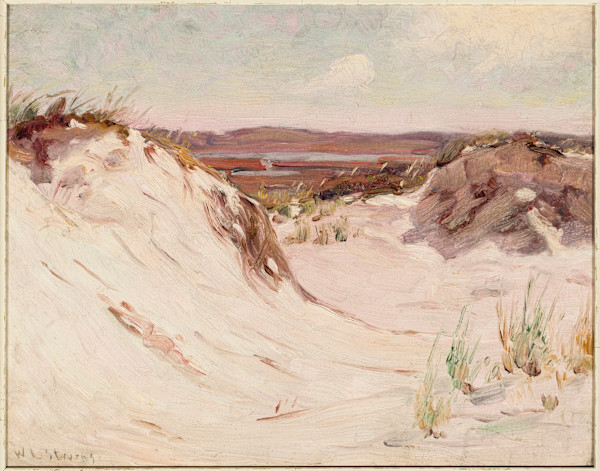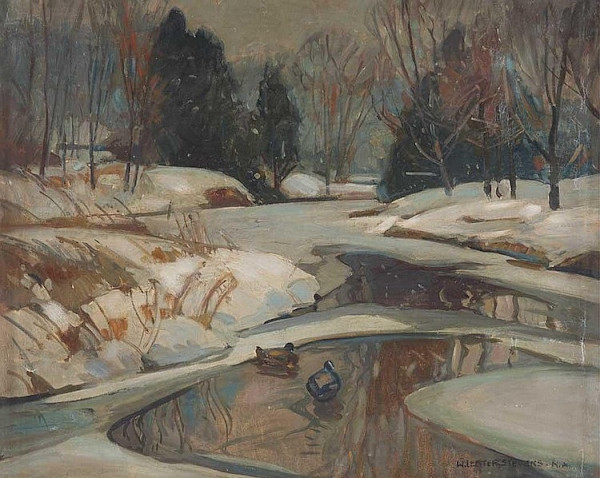-
Artist: William Lester Stevens (American, 1888-1969)
“Born in Rockport, Massachusetts, Stevens received his initial art training from Parker Perkins, a local marine painter who charged him fifty cents an hour. He later spent four years at Boston's Museum of Fine Arts School, where he studied under Edmund Tarbell, among others. Although influenced by Tarbell, Stevens' wide range of brushstrokes and impressionist style prevented him from being classified as a "Tarbellist," as many of Tarbell's followers were labeled” (1).
“By the age of eighteen, he had exhibited his first piece at the National Academy of Design and entered the Boston Museum of Fine Arts School under Edmund Tarbell. He launched an active painting career and continued exhibiting his work, but was interrupted by a tour of duty during the First World War. After fulfilling his service, Stevens withdrew from the art world, only emerging in 1921 when the Boston Art Club invited him to exhibit paintings. It was also around this time that he worked to found the Rockport Art Association, which continues to thrive today” (2).
“Throughout the course of his long career, Stevens taught, first in Rockport, then at Boston University (1925-1926) and Princeton (1927-1929). He later gave lessons and held one-man shows in Charlotte and Asheville, North Carolina, where his work was well-received. Southerners particularly enjoyed his views of famous Southern gardens and cities” (1).
“During his time at Princeton, Stevens was extremely productive and exhibited extensively. In 1928, Stevens showed at the American Watercolor Society and won the William S. Delano Prize. He also exhibited at the National Gallery of Art and the Corcoran Gallery of Art. Despite his rigorous academic schedule, he produced enough paintings during 1928 to send works to the New Haven Paint and Clay Club where Winter in New Jersey won the Mansfield Prize. Also during this time[,] he had a one man show at the American Association of University Women at the Public Library in Birmingham, Alabama, followed by an exhibition of over thirty oil paintings at the J.B. Speed Museum in Louisville, Kentucky” (3).
“Always a realist, he participated in the Federal Art Project during the Great Depression and produced murals for post offices in Rockport and Dedham, Massachusetts, as well as for a number of schools in the city of Boston. In 1944, he left Rockport to settle in the rural town of Conway, Massachusetts, and continued to teach and paint there, insisting that he work outdoors each day” (2).
“Stevens continued to create views of New England until almost the final day of his life, June 10, 1969. He died in Conway, Massachussetts [sic]” (1).
References:
1.
Askart Staff. William Stevens [internet]. [cited 2016 Jan 7]. Available from: http://www.askart.com/artist_bio/William_Lester_Stevens/24073/William_Lester_Stevens.aspx
2.
Vose Gallery Staff. William Lester Stevens (1888-1969) [internet]. Boston, MA: Vose Galleries LLC; 2014 [cited 2016 Jan 7]. Available from: http://www.vosegalleries.com/artists/william-lester-stevens
3.
MME Fine Art Staff. William Lester Stevens: Artist Biography [internet]. New York, NY: MME Fine Art [cited 2016 Jan 7]. Available from: http://www.mmefineart.com/artist/bio/index.php?aid=314

